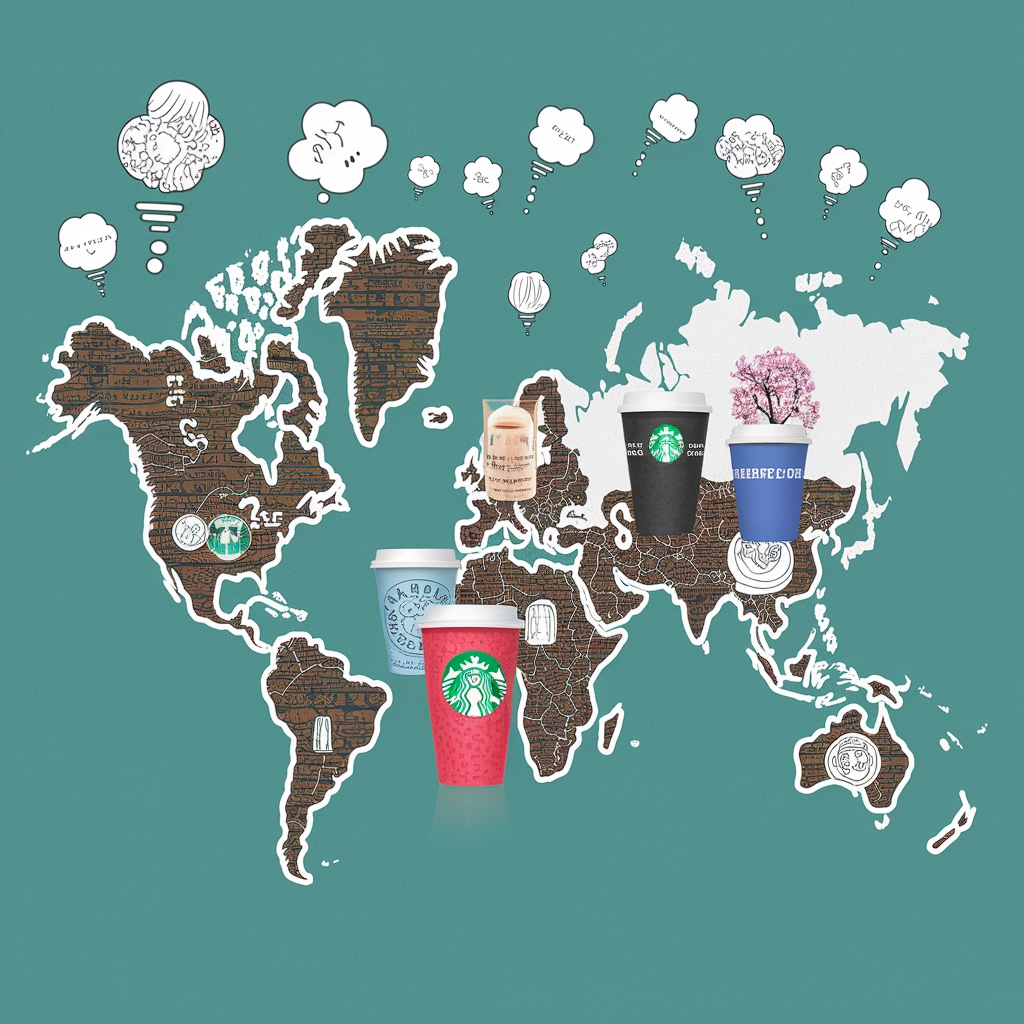Struggling For Market Insights? 15+ Proven Research Examples
- caracal0161
- Jul 28
- 5 min read

In today's rapidly evolving marketplace, having deep insights into customer needs and market trends isn't just advantageous—it's essential for survival. Yet many businesses struggle to implement effective market research strategies that deliver actionable intelligence without breaking the bank or consuming months of valuable time.
Whether you're a venture capitalist evaluating investment opportunities, an entrepreneur launching a new product, or an executive steering a company through changing markets, learning from successful research approaches can dramatically improve your decision-making process. Let's explore how some of the world's most innovative companies have mastered market research to drive growth and maintain competitive advantage.
Customer-Driven Innovation: Learning from the Masters
Apple: Perfecting Products Through Targeted Feedback
Apple's legendary product development isn't just about visionary leadership—it's backed by sophisticated market research. The company utilizes its Apple Customer Pulse panel to gather highly specific feedback through carefully designed surveys.

What makes Apple's approach unique is its focus on:
- Quality over quantity: Rather than casting a wide net, Apple targets specific user segments
- Iterative testing: Products undergo multiple rounds of testing and refinement
- Future needs identification: Research focuses not just on current pain points but anticipated future needs
- Competitive benchmarking: Understanding what makes their offerings superior to alternatives
This methodical approach helps Apple maintain its premium position while consistently delivering products that resonate with consumers.
Nike: Athletic Insights Driving Product Excellence
Nike's market research strategy demonstrates the power of deep customer understanding combined with expert collaboration.

Nike invests heavily in understanding granular details of customer preferences, including:
- Running surface preferences
- Typical distance metrics
- Athlete-specific requirements
- Use case scenarios
By collaborating directly with athletes and designing shoes for specific needs, Nike has transformed market research into a competitive advantage that keeps them at the forefront of athletic wear innovation.
Cultural Adaptation: Global Brands, Local Insights
Starbucks: Brewing Success Through Local Relevance
Starbucks has mastered the art of adapting its global brand to local markets through dedicated research initiatives. Their "My Starbucks Idea" platform revolutionized how they gather customer insights.

Their research approach includes:
- Crowdsourcing innovations: Collecting customer ideas directly
- Cultural immersion: Researching local coffee traditions and preferences
- Menu localization: Developing region-specific offerings based on taste profiles
- Store design adaptation: Ensuring physical spaces resonate with local aesthetics
For example, Starbucks offers green tea frappuccinos in Asia, tandoori paneer wraps in India, and regional pastries across Europe—all backed by thorough market research that identifies what will resonate locally.
LEGO: Building New Markets Through Research
LEGO demonstrates how targeted research can open entirely new market segments. After conducting extensive studies into how girls interact with toys differently than boys, LEGO developed product lines that significantly expanded their customer base.
Their research revealed:
"We learned that girls enjoy the building process but also deeply value the role-play narrative that follows construction. This insight fundamentally changed our approach to product development." — LEGO Design Team
This research-backed approach led to the successful LEGO Friends line, which generated over $1 billion in sales in its first three years—proof that good market research delivers substantial ROI.
Testing and Iteration: Minimizing Risk Through Research
McDonald's: Menu Development Through Data
McDonald's meticulously researches and tests new menu items, ensuring high success rates for new offerings.

Their comprehensive research approach includes:
- Consumer profiling: Developing detailed personas of target customers
- Preference mapping: Understanding regional taste variations
- Affordability analysis: Determining optimal price points
- Limited releases: Testing new items in select markets before global rollout
McDonald's also gathers feedback through multiple channels:
- In-store surveys
- Mobile app feedback
- Social media sentiment analysis
- Focus groups
This multi-faceted approach helps McDonald's maintain relevance across diverse markets while minimizing failed product launches.
KFC: Limited Testing to Reduce Risk
KFC exemplifies how targeted testing can reduce financial risk when launching innovative products. Before committing to a nationwide launch of meatless chicken alternatives, KFC conducted limited store testing to gauge consumer response.
This approach allowed them to:
- Measure real sales performance
- Gather authentic customer feedback
- Refine product specifications
- Adjust marketing strategies
By testing in select locations first, KFC significantly reduced the risk associated with rolling out novel products while gathering crucial data for optimization.
Innovative Research Methods: Beyond Traditional Approaches
GoPro: Leveraging User-Generated Content
GoPro has pioneered the use of user-generated content (UGC) as a market research tool, creating a continuous feedback loop with consumers.
By analyzing content shared by users, GoPro gains insights into:
- Actual usage patterns: How products function in real-world scenarios
- Feature utilization: Which capabilities matter most to users
- Pain points: Identifying common frustrations through user behavior
- Inspiration for innovation: Discovering unexpected use cases
This approach delivers authentic insights that traditional focus groups or surveys might miss while simultaneously building community and brand loyalty.
Little Moons: Social Listening as Research
Little Moons, the mochi ice cream brand that experienced viral TikTok success, demonstrates how social media analysis can function as sophisticated market research.
Their approach involves:
- Monitoring social conversations about their products
- Analyzing demographic data of engaged users
- Mapping sentiment patterns across platforms
- Identifying trend opportunities
This social listening strategy helped Little Moons identify their core customer base—health-conscious millennials and Gen Z consumers—and tailor marketing accordingly, resulting in explosive growth.
Disney: Specialized Research for Unique Audiences
Disney's approach to researching children's preferences showcases how research methodologies must adapt to specialized audiences.
Their focus groups with preschoolers and kindergartners include:
- Atmosphere modification: Creating child-friendly environments
- Observational techniques: Watching reactions rather than relying solely on verbal feedback
- Interactive elements: Using play-based methods to gather insights
- Parental partnerships: Combining child responses with parent observations
This developmentally appropriate research helps Disney create content that genuinely resonates with young viewers while meeting educational standards and parental expectations.
Yamaha: Tactical Research for Specific Decisions
Yamaha demonstrates how targeted research can resolve specific product development questions. When designing their Montage keyboard, they used Qualtrics surveys to determine whether musicians preferred knobs or sliding faders.
This laser-focused approach:
- Addressed a specific design question
- Involved actual users in the decision
- Provided clear direction for development
- Improved user satisfaction with the final product
Sometimes the most valuable research answers very specific questions rather than broad market analyses.
Market Research Trends and Statistics
The global market research industry generates over $118 billion in annual revenue, with the United States claiming a 53% market share. This substantial investment reflects the value businesses place on quality insights.
Current trends in market research methodologies include:
Method | Adoption Rate | Key Benefit |
Online Surveys | 89% | Cost-effectiveness and scale |
Mobile-First Surveys | 64% (13% considering) | Reaching consumers where they are |
Proprietary Panels | 61% | Consistent respondent quality |
Online Communities | 59% | Ongoing relationship with consumers |
These statistics highlight how digital approaches are making quality research more accessible to organizations of all sizes.
Implementing Effective Market Research: Key Takeaways
After examining these successful examples, several principles emerge that businesses of any size can apply:
- Match method to objective: Choose research approaches that align with specific goals
- Start small and iterate: Test in limited markets before full-scale implementation
- Combine multiple data sources: Triangulate findings through varied methodologies
- Involve actual users: Get feedback from genuine customers, not just theoretical markets
- Focus on actionable insights: Prioritize research that leads to clear decisions
For companies seeking to implement these strategies without building extensive in-house research capabilities, consulting partners that utilize advanced AI technologies can deliver comparable insights with dramatically reduced timeframes. For example, platforms like CEOPro AI can produce comprehensive market analyses in as little as 48 hours, providing the intelligence needed for time-sensitive decisions at a fraction of traditional consulting costs.
Conclusion
The most successful companies in the world don't guess what their customers want—they know, because they've researched thoroughly and methodically. From Apple's targeted panels to Starbucks' cultural adaptations, effective market research provides the competitive advantage that separates market leaders from followers.
By studying these proven examples and applying similar principles to your own business challenges, you can transform market research from a cumbersome expense into a strategic asset that drives innovation, reduces risk, and ultimately delivers superior financial performance.
In today's fast-moving business environment, the companies that win aren't necessarily those with the biggest budgets, but those with the best insights—and the courage to act on them.

Comentarios